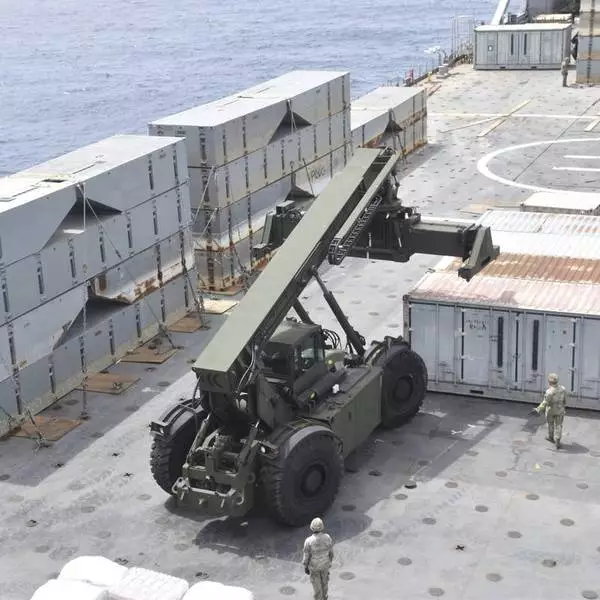They're all women of color. Every one of them is an American citizen. And of the four members of the self-styled "squad" duly elected to the House of Representatives, only one was born outside the U.S.
In racist tweets over the weekend, President Donald Trump almost certainly was referring to this group of liberal House freshmen whose elections in 2018 helped return the chamber to Democratic control. Among Trump's tweets: "Why don't they go back and help fix the totally broken and crime infested places from which they came."
Trump defended the tweets Monday and suggested the Democrats leave the country if they have complaints. Condemnation poured in from Democrats and — slowly — a selection of Republicans.

Rep. Alexandria Ocasio-Cortez, D-N.Y., left, Rep. Ayanna Pressley, D-Mass., center, and Rep. Rashida Tlaib, D-Mich., right, gather their things following the adjournment of a House Oversight Committee hearing on Capitol Hill in Washington, Monday, July 15, 2019, on White House counselor Kellyanne Conway's violation of the Hatch Act. (AP PhotoSusan Walsh)
Here's a look at the lawmakers Trump referenced:
Rep. Alexandria Ocasio-Cortez of New York, 29
The Bronx-born former bartender is the charismatic star of the class of 2018, winning her seat in a primary and turning her massive social media following into a measure of power on Capitol Hill.
Ocasio-Cortez, a self-described democratic socialist, has clashed with House Speaker Nancy Pelosi over the influence of newcomers. She's also been conspicuously courted by some of the party's many presidential candidates, including Sens. Elizabeth Warren of Massachusetts and Bernie Sanders of Vermont.
To Trump, she tweeted:
"Mr. President, the country I 'come from,' & the country we all swear to, is the United States."
Rep. Ilhan Omar of Minnesota, 36
Omar was a child when her family fled civil war in Somalia, an African nation of about 12 million, after it was shattered by a civil war in 1991. She spent years in a refugee camp in Kenya and immigrated to the United States as a refugee in 1995. Omar became eligible for citizenship five years after the family entered.
Omar became a U.S. citizen in 2000.
In the House, she has repeatedly run up against more senior Democrats over her remarks about Israel and what she said was the need to question the Jewish state's influence in Washington.
To Trump, she tweeted:
"The only country we swear an oath to is the United States. Which is why we are fighting to protect it from the worst, most corrupt and inept president we have ever seen."
Rep. Rashida Tlaib of Michigan, 42
The Detroit native is the first Palestinian American elected to the House. She and Omar are the first Muslim American women to serve in the chamber.
And like Omar, Tlaib made a name for herself almost immediately after House Speaker Nancy Pelosi gaveled the new session of Congress into session in January. That night, Tlaib was videotaped talking to a liberal group — saying of Trump: "We're gonna impeach the motherf---er."
No such effort is underway even now, in large part because Pelosi and other Democrats don't see bipartisan public sentiment for doing so.
To Trump, Tlaib tweeted:
"Keep talking, you just make me work harder. I'm proud of my Palestinian roots & a WEAK bully like you never wins."
Rep. Ayanna Pressley of Massachusetts, 45
A Cincinnati native raised in Chicago, Pressley worked for Rep. Joseph P. Kennedy and worked for John Kerry for 13 years while he served in the Senate.
In 2009, she ran for an at-large seat on Boston City Council and became the first woman of color elected to the body in its 100-year history.
Of Trump's tweets, she responded:
"THIS is what racism looks like. WE are what democracy looks like. And we're not going anywhere. Except back to DC to fight for the families you marginalize and vilify everyday."
Follow Kellman on Twitter at http://www.twitter.com/APLaurieKellman
WASHINGTON (AP) — The U.S. military finished installing a floating pier for the Gaza Strip on Thursday, with officials poised to begin ferrying badly needed humanitarian aid into the enclave besieged over seven months of intense fighting in the Israel-Hamas war.
The final, overnight construction sets up a complicated delivery process more than two months after U.S. President Joe Biden ordered it to help Palestinians facing starvation as food and other supplies fail to make it in as Israel recently seized the key Rafah border crossing in its push on that southern city on the Egyptian border.
Fraught with logistical, weather and security challenges, the maritime route is designed to bolster the amount of aid getting into the Gaza Strip, but it is not considered a substitute for far cheaper land-based deliveries that aid agencies say are much more sustainable. The boatloads of aid will be deposited at a port facility built by the Israelis just southwest of Gaza City and then distributed by aid groups.
Heavy fighting between Israeli troops and Palestinian militants on the outskirts of Rafah has displaced some 600,000 people, a quarter of Gaza’s population, U.N. officials say. Another 100,000 civilians have fled parts of northern Gaza now that the Israeli military has restarted combat operations there.
Pentagon officials said the fighting in Gaza wasn’t threatening the new shoreline aid distribution area, but they have made it clear that security conditions will be monitored closely and could prompt a shutdown of the maritime route, even just temporarily. Already, the site has been targeted by mortar fire during its construction and Hamas has threatened to target any foreign forces who “occupy” the Gaza Strip.
The “protection of U.S. forces participating is a top priority. And as such, in the last several weeks, the United States and Israel have developed an integrated security plan to protect all the personnel," said Navy Vice Adm. Brad Cooper, a deputy commander at the U.S. military's Central Command. "We are confident in the ability of this security arrangement to protect those involved.”
U.S. troops anchored the pier at 7:40 a.m. local time Thursday, the military's Central Command said, stressing that none of its forces entered the Gaza Strip and would not during the pier's operations.
“Trucks carrying humanitarian assistance are expected to begin moving ashore in the coming days,” the command said. “The United Nations will receive the aid and coordinate its distribution into Gaza.”
The World Food Program will be the U.N. program handling the aid, officials said.
Israeli forces will be in charge of security on the shore, but there are also two U.S. Navy warships near the area in the eastern Mediterranean Sea, the USS Arleigh Burke and the USS Paul Ignatius. Both ships are destroyers equipped with a wide range of weapons and capabilities to protect American troops off shore and allies on the beach.
Israeli military spokesman Lt. Col. Nadav Shoshani confirmed that the pier had been attached and that Israeli engineering units had flattened ground around the area and surfaced roads for trucks.
“We have been working for months on full cooperation with (the U.S. military) on this project, facilitating it, supporting it in any way possible,” Shoshani said. “It’s a top priority in our operation.”
Aid agencies say they are running out of food in southern Gaza and fuel is dwindling, which will force hospitals to shut down critical operations and halt truck deliveries of aid. The U.N. and others have warned for weeks that an Israel assault on Rafah would cripple humanitarian operations and cause a disastrous surge in civilian casualties.
More than 1.4 million Palestinians — half of Gaza’s population — have been sheltering in Rafah, most after fleeing Israel’s offensives elsewhere.
The first cargo ship loaded with 475 pallets of food left Cyprus last week to rendezvous with a U.S. military ship, the Roy P. Benavidez, which is off the coast of Gaza. The pallets of aid on the MV Sagamore were moved onto the Benavidez. The Pentagon said moving the aid between ships was an effort to be ready so it could flow quickly once the pier and the causeway were installed.
The installation of the pier several miles (kilometers) off the coast and of the causeway, which is now anchored to the beach, was delayed for nearly two weeks because of bad weather. The sea conditions made it too dangerous for U.S. and Israeli troops to secure the causeway to the shore, U.S. officials said.
Military leaders have said the deliveries of aid will begin slowly to ensure the system works. They will start with about 90 truckloads of aid a day through the sea route, and that number will quickly grow to about 150 a day. But aid agencies say that isn't enough to avert impending famine in Gaza and must be just one part of a broader Israeli effort to open land corridors.
Because land crossings could bring in all the needed aid if Israeli officials allowed, the U.S.-built pier-and-sea route “is a solution for a problem that doesn’t exist,” said Scott Paul, an associate director of the Oxfam humanitarian organization.
Biden used his State of the Union address on March 7 to order the military to set up a temporary pier off the coast of Gaza, establishing a sea route to deliver food and other aid. Food shipments have been backed up at land crossings amid Israeli restrictions and intensifying fighting.
Under the new sea route, humanitarian aid is dropped off in Cyprus where it will undergo inspection and security checks at Larnaca port. It is then loaded onto ships — mainly commercial vessels — and taken about 200 miles (320 kilometers) to the large floating pier built by the U.S. military off the Gaza coast.
There, the pallets are transferred onto trucks, driven onto smaller Army boats and then shuttled several miles (kilometers) to the floating causeway, which has been anchored onto the beach by the Israeli military. The trucks, which are being driven by personnel from another country, will go down the causeway into a secure area on land where they will drop off the aid and immediately turn around and return to the boats.
Aid groups will collect the supplies for distribution on shore, with the U.N. working with the U.S. Agency for International Development to set up the logistics hub on the beach.
Sabrina Singh, Pentagon spokeswoman, told reporters that the project will cost at least $320 million, including the transportation of the equipment and pier sections from the United States to the coast of Gaza, as well as the construction and aid delivery operations.
Associated Press writers Jon Gambrell in Dubai, United Arab Emirates, and Julia Frankel in Tel Aviv, Israel, contributed to this report.

US military says Gaza Strip pier project is completed, aid to soon flow as Israel-Hamas war rages on

US military says Gaza Strip pier project is completed, aid to soon flow as Israel-Hamas war rages on

In this image provided by the U.S. Army, soldiers assigned to the 7th Transportation Brigade (Expeditionary) and sailors attached to the MV Roy P. Benavidez assemble the Roll-On, Roll-Off Distribution Facility (RRDF), or floating pier, off the shore of Gaza on April 26, 2024. The U.S. expects to have on-the-ground arrangements in Gaza ready for humanitarian workers to start delivering aid this month via a new U.S.-backed sea route for Gaza aid. An official with the U.S. Agency for International Development tells the AP that humanitarian groups expect to have their part of preparations complete by early to mid-month. (U.S. Army via AP)













